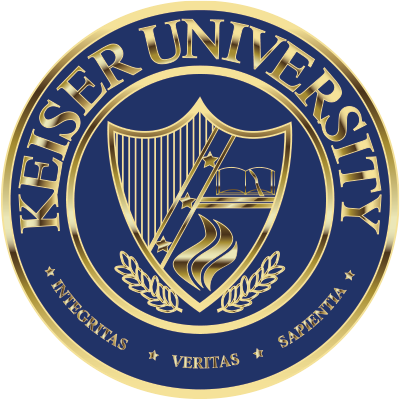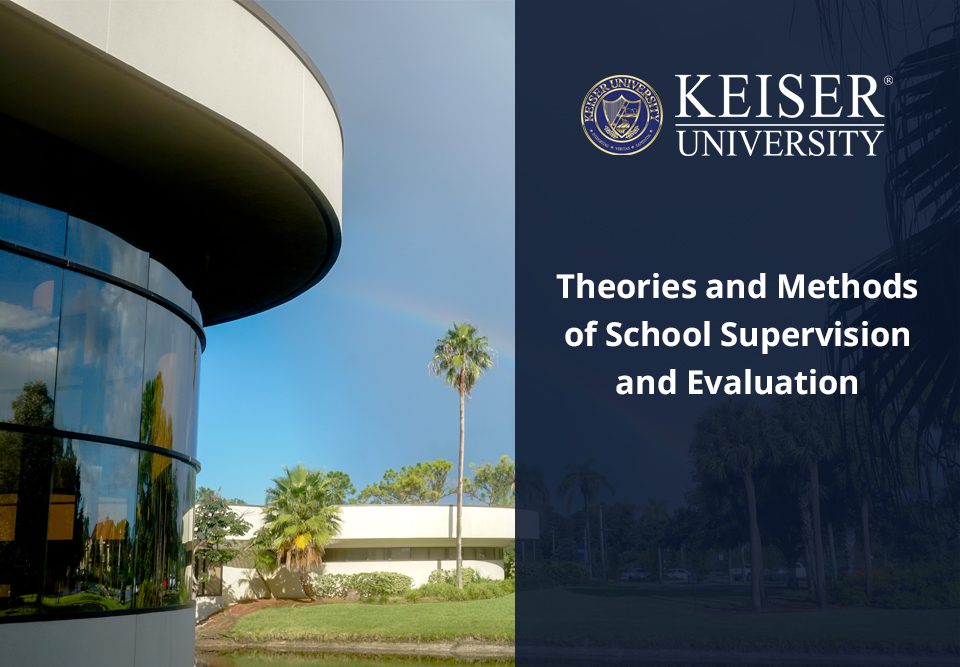While school supervision is far from a novel concept, the reality is that its methodologies and techniques have come a long way in the past several decades. Today, there are many different theoretical frameworks and techniques for school supervision used by educational leaders, each with its own potential advantages and drawbacks.
If you’re planning to go into educational leadership or simply want to learn more about types of supervision in schools as an educator or leader, there’s a lot to explore.
What Is School Supervision?
If you’ve worked in schools, then you’re already familiar with the concept of educational supervision. However, it can still be helpful to consider a precise definition of the term, as well as its role in instructional leadership and improvement.
Definition and Scope of School Supervision
Specifically, school supervision or educational supervision refers to a process of evaluating, assessing and guiding teachers and staff toward improvement of everyday work. Ultimately, this guidance is based on the end-goal of providing a higher level of learning engagement and improved student outcomes.
The people supervising educators and other staff are typically members of administration, including educational leaders.
Role in Instructional Leadership and Improvement
Educational supervision plays a significant role in a teacher’s overall instructional leadership and improvement. When teachers and educators are directly supervised and receive supportive and guided feedback on their work, they can improve their own instructional leadership to support students in achievement of learning objectives. The ultimate goals of supervision are to build better teachers and to improve student learning.
H3: School Supervision Theories and Principles
There are many different theories and principles of teacher supervision in use by different schools and districts. However, supervision methods should be rooted in effective communication and a sense of team culture, where all educators are striving toward a common goal. Likewise, any method of supervision must be comprehensive enough to assess the entire school system fairly and accurately.
Objectives of Effective School Supervision Practices
In addition to improving instructional leadership, there are a number of other objectives of supervision in schools. These may include:
- Identification of unique learner needs.
- Creation of a supportive and collaborative learning environment.
- Improvement of relationships among staff members.
Theoretical Frameworks in School Supervision
Most schools, or even entire school districts, subscribe to a single theoretical framework when it comes to educational supervision or teacher supervision. This may be a more traditional theory, such as the bureaucratic model or scientific management approach, or a more contemporary theory.
Traditional Theories of Supervision
Two of the more conventional supervision theories applied in schools today are the bureaucratic and scientific management models, which you can learn more about below.
Bureaucratic Model
This model is hierarchical in its structure, where there is a designated chain of command starting with teachers and working up to supervisors and administrators. This model is most common in larger schools, though it can be found in action just about anywhere in the educational system.
Scientific Management Approach
With this approach, supervision is more focused on optimizing the efficiency of work through careful data analysis and scientific methods. With this method, there is less of a hierarchy and more direct supervision and data-driven instruction.
Contemporary Theories of School Supervision
More contemporary theories of school supervision rely less on a hierarchical model and more on different leadership models that have been proven effective. These theories typically aim to build and strengthen relationships between teachers and leadership as well as among faculty as a whole. Their underlying goals are to identify and improve the teaching skills of existing faculty in both content and process (pedagogy), as well as working to create a strong, positive school culture. They are also intended to improve retention of teachers and ultimately, improve student outcomes. Some of the leadership models mentioned below are frequently tied to these contemporary approaches to supervision.
Transformational, Distributed, Instructional Leadership
There are three main types of leadership/evaluation styles that fall into this category, including:
- Transformational leadership - This style involves supervising and instructing based on short- and long-term goals for the future.
- Distributed leadership - This style of leadership is more focused on collaborative thinking, where all members of school staff are invited to share ideas and provide feedback freely.
- Instructional leadership - This refers to a system where educational leaders essentially set the tone for all aspects of learning. Typically, this is done through by offering opportunities for professional development, individualized coaching and proper resource allocation.
Methods of School Evaluation
Educational leaders are often responsible for conducting performance evaluations of teachers, staff and even entire schools as a whole. In doing so, choosing the right evaluation method is critical.
Administrative, Educational and Supportive Methods
Assessment may include administrative leaders and similar staff. In these instances, leaders may assess administrators by looking at their own effectiveness as leaders, as well as their ability to achieve school-wide or district-wide goals.
Educational evaluation must be handled differently, with evaluation methods ranging from diagnostic and summative to formative. In the interim, other tools may also be used in assessment that may include focus groups, surveys and similar options.
Evaluation Process in Schools: Assessment Methods
Common assessment methods used in evaluating education and instructional quality in schools include:
- Formative assessment - Teachers are closely monitored during the instructional process, with progress measured via student learning outcomes.
- Diagnostic assessment – Teacher’s strengths and weaknesses are evaluated multiple times throughout the school year, with progress being compared between each assessment period.
Evaluation Models: CIPP Model & Danielson’s Framework
Numerous educational leaders are also beginning to utilize the CIPP Model and Danielson’s Framework in their own assessments. Specifically, the CIPP model focuses on four key stages that include:
- Context – Determining goals, priorities and desired outcomes.
- Input – Determining how these goals and outcomes should be met.
- Process – Assessing how well the plan has been implemented and followed.
- Product – Evaluating how well the actual outcomes have aligned with initial goals and objectives.
Integrating Theory Into School Supervision Practice
Educational leaders can ultimately complete the most comprehensive evaluations and assessments when they are integrating theory into practice in their own work. Specifically, this means following some best practices and strategies for promoting teacher development in the work they do.
Best Practices in School Supervision and Evaluation
In assessing and evaluating teachers or other educators, leaders must always foster a culture of collaboration. Ideally, educators should feel supported and valued during the evaluation process, with the understanding that everybody is working toward better learning outcomes for students.
Strategies for Promoting Teacher Growth and Development
Teacher growth and development is best achieved when educators have plenty of opportunities to put their own ideas and improvements into practice. This should mean offering plenty of professional development and other growth opportunities for teachers who may need additional support, plus fostering collaboration among teachers to share ideas and grow as a group.
Ethical Considerations in School Supervision and Evaluation
In conducting school assessments and evaluations, educational leaders must also keep some important ethical principles and other considerations in mind.
Ethical Principles for Conducting Evaluations
For starters, all educators should be treated with the same level of fairness and professionalism in the workplace. This also means ensuring that all teachers are afforded the same assessment standards to ensure objective and non-biased outcomes whenever possible.
Confidentiality and Transparency
Educators should be confident that their assessments and results are confidential and that the assessment criteria are transparent. There is nothing to be gained from keeping assessment criteria a secret, so these details should be shared with educators from the beginning.
Strategies for Maintaining Professionalism and Integrity
Educational leaders also have a responsibility to ensure professionalism and integrity when evaluating and assessing teachers and faculty. This means objectively and fairly measuring the things that matter, as well as scheduling evaluations in advance so teachers know what to expect from the process. At the same time, results of assessments should be provided as soon as possible. These results are always being connected back to opportunities for development or improvement.
Technology and Innovation in School Supervision Evaluation
Fortunately for educational leaders, new technologies and innovations are making the process of evaluating and assessing teachers easier and less time-consuming than ever. The key, of course, is knowing how to use these technologies to your advantage in school leadership for the best results. Choosing and implementing the right technologies isn’t always easy and typically requires a great deal of research, training and practice to get just right.
Role of Technology in Supervision and Evaluation Processes
Emerging technologies, like data collection and analysis platforms, now allow assessments to include real-time diagnostic data on student outcomes, such as test scores and grades. This helps evaluators better assess teacher performance and its impact on student learning outcomes.
Tools and Software for Conducting Evaluations
It is also worth noting that many tools and software platforms now exist specifically for the purpose of helping to conduct evaluations and assessments. These platforms can help educational leaders perform more objective and neutral assessments, taking the potential for bias out of the equation. This can ultimately provide teachers with more actionable recommendations for development while saving educational leaders time in handling evaluations manually.
Performance evaluation software can increase engagement among teachers aiming to improve their instructional leadership. It also offers continuous feedback opportunities that traditional evaluations may not provide.
Pursue a Doctor of Education Degree at Keiser University
Ultimately, there is no universally superior method of educational supervision because all schools have different needs, goals, missions and resources. At the same time, all schools share a common goal of improving learning outcomes for students while maintaining a healthy environment of work and growth for staff.
If you’re interested in learning more about different techniques of supervision in schools and how they can be used to achieve short- and long-term learning outcomes, it may be time to explore Keiser University’s Doctor of Education program. Specifically, this online program is designed for academic and school leader roles to build a stronger foundation of educational leadership across the board. Plus, because this program is offered online, it’s designed to work with the busy schedule of today’s educators and can be completed in as little as 24 months.
Learn more about our EdD program by connecting with a graduate admissions counselor or get started with your online application today.






 The instructors at Keiser University impacted my life. They believed in my ability to become a great graphic designer, regardless of how I felt about my skills. KU helped to prepare me for the real world and got me to where I am today.
The instructors at Keiser University impacted my life. They believed in my ability to become a great graphic designer, regardless of how I felt about my skills. KU helped to prepare me for the real world and got me to where I am today.
